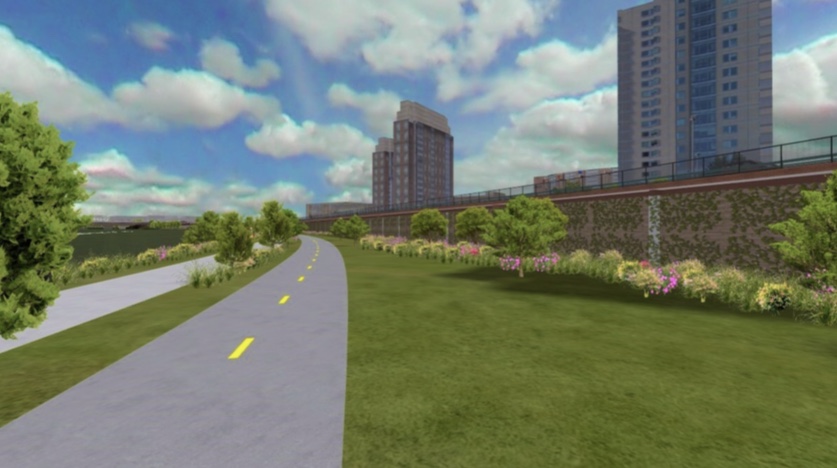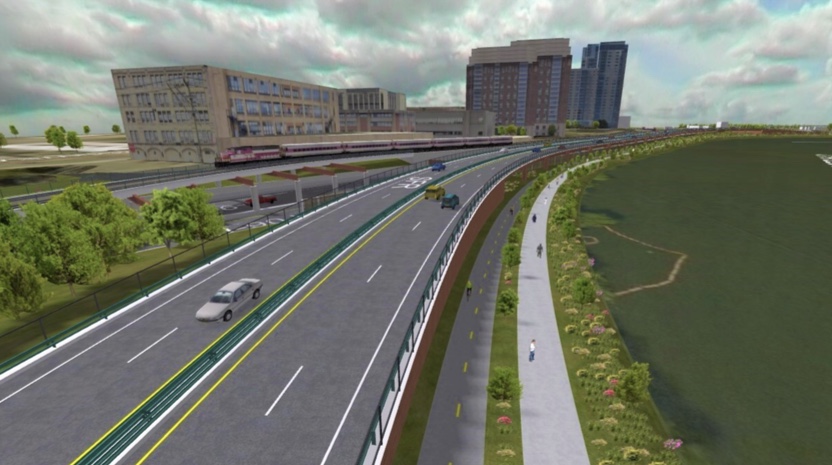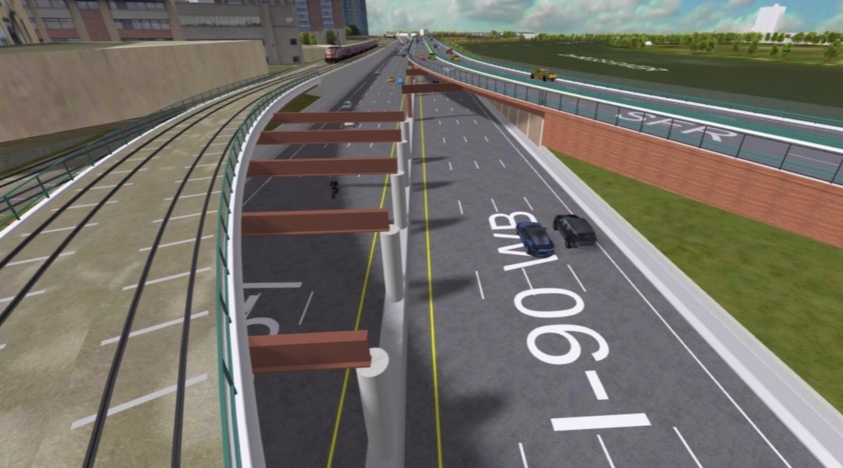I'm certainly not qualified to assess a track layout in depth. Some of the points I see that I'm skeptical of:
- Hudson Yards was so expensive for a number of obvious reasons. They were building in Manhattan. For the deck, they were building on top of an extremely tightly packed, active rail yard that had to be kept mostly in service, which made all of that construction and staging extremely complicated. Allston is basically a blank slate in comparison. And the future railyard that may be there if you're doing things after that fact will not have the extreme level of importance that West Side Yard has to NY Penn.
The only reason the Beacon Park layover yard still exists is that the T has the easement under lock-and-key here...but does not have the FAR BETTER layover site at Widett Circle in-hand. BP has room for only 8 trainsets, which isn't anywhere close to enough to serve central-district layover needs and which will require so much deadheading between South Station and BP that it may cause traffic conflicts at Yawkey and Back Bay. It's space-invasive and ops-sucky. But it's all they have right now.
The Widett 'bowl' would have room for 32 trainsets and be track-spaced for a complete air rights cover-over. Ridiculously superior. And before another transpo blogger masquerading as real estate kingmaker (Ari Osevit, I'm looking your way) shits all over the idea because of the utter simplistic falsehood "NSRL doesn't require downtown yards because trains never stop running"...when the time comes for run-thru service and you can
shave back (NOT zero-out) downtown storage, there's 3 immediate adjacent bus garages you could start consolidating on the ground level of the 'bowl' instead. This is absolutely the 100-year solution they need to be going guns-blazing at.
And there's some anecdotal evidence that the T
is trying to get its hands on the Food Market, cold storage, and BTD tow lot parcels to set up the 100-year fix. But every pol, businessperson, and media member with influence in downtown has got their fingers in the pot over that one. Including a lot of the Boston 2024 has-beens who once thought an upper-level stadium with lower-level
parking built whole by one "Master Developer" paying all decking costs and assuming all risks was a sweller idea over taking the ground-level transpo easement as a down-payment on the decking. Something about that parcel just seems to make important people bleed stupid all over instead of looking for the most direct way to get a job done. So unfortunately the T is being stampeded by all this interference, and the For Sale signs on all those properties are starting to turn yellow from all the gridlock.
In the meantime, the T has to keep pumping out more useless renders of a BP layover yard it would much love to delete entirely and pocket some more money from Harvard. They don't even need this space in-hand for future EMU maintenance shops if Widett handles storage, because Readville has more than enough expansion space for that and shops don't have to be as close to the terminals as yards. But they don't have a choice. The mess everyone else is making out of a coulda-been basic transaction at Widett ends up making a mess out of the BP/West planning.
- Pretty sure the railyard is desired to support daytime layovers for future service growth, isn't it? Having trains out in Framingham or Worcester is the opposite of where you want to have to put them for evening rush?
Not future growth, current shortfall. The T's current layup tracks at the fringes of Widett are too short to handle monster 7-8 car consists, so they have to bogart space at Amtrak Southampton Yard to fit those. It's been a 15-year war with Amtrak and the T over bogarting that space, and Amtrak is going to tell them to scram when their new equipment orders allow for Acela and Regionals schedule expansion. So unfortunately unless there's resolution on a different layover site BP's going to be deadheading a lot of Providence sets back inbound in addition to the Worcesters for rush.
Levy's "put 'em all in Framingham" missive lacks understanding of how the T schedule works and just assumes "if it's T it must be stupid, so. . .". I'm going to assume here he just didn't have that uniquely local factoid at-hand, because he's usually not that ops-obtuse.
- The T's design (mostly) makes sense if you envision the neighborhood becoming a huge source of ridership (and potentially demanding additional new bus routes) and not just as a transfer point for existing service. Given how the Seaport's gone and with Boston Landing overperforming ridership estimates, I'm not sure that going big is the wrong move for the scope of what'll probably wind up on the adjacent sites in the future.
No, but it's clearly not finished given the whole yard dilemma and the placement askew from the street grid that doesn't infill the bus access. They probably needed to spend more time on this render. And much as MassDOT would rather stay hands-off from all the political free-for-all with the Widett parcels and avoid it contaminating a wholly separate project like the Pike, it's painfully obvious that lack of progress a mile east at Widett is affecting the quality of the canvas at West. They don't have infinite time to delete/redesign the yard should their preferred parcels come available, and they don't have infinite time to massage the surroundings in these renders before they actually have to build it with the yard provision locked-in. OK...we're not quite there yet, but it's still floating around in neutral and leaving a somewhat disconnected look to this space.
Some of what I agree with upon thinking about it:
- I agree that I'm not sure I like the existing busway plan, the diagrams previously presented of Cambridge-bound buses having to loop around it look like awkward and time-wasting movements.
https://www.mass.gov/files/documents/2019/05/21/Allston_FMCB_052019.pdf (slide 13/14). Reworking that to let buses drop off in their direction of travel seems better.
Yeah...it's a mess. Maybe there's a logic to it I'm not seeing, but I'm a little baffled that they sketched it out like they did because it doesn't seem logical at all.
The track layout is overly complicated, too. I agree with Levy there...too many damn crossovers, and insane amount of infrastructure duplication to put it all on a turnout far away from the mainline with the yard sandwiched in between. This would be so much easier without the yard...or with the yard on ONE side (any one side) instead of in the middle. T southside ops must be ready to vomit looking at this spaghetti mess.
I dunno...lot of stuff on the plan looks good, lesser amounts of stuff on the plan looks bad. But it's getting a bit close to crunch-time for such large parts of it to be...so
unformed at this juncture. Like, I can feel very optimistic yet have a real queasy feeling that they're going to screw up something major...both at the same time.




